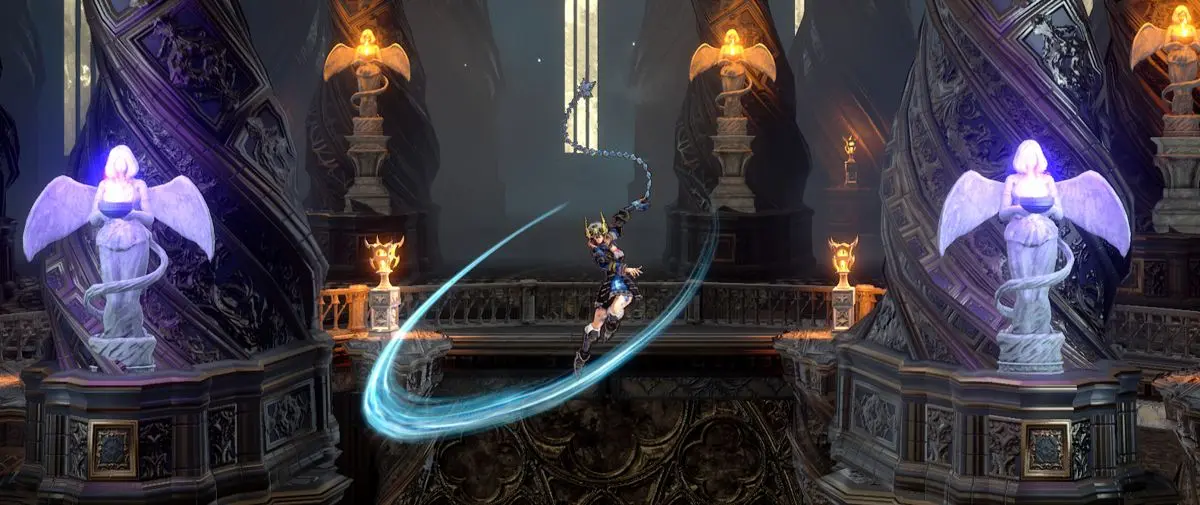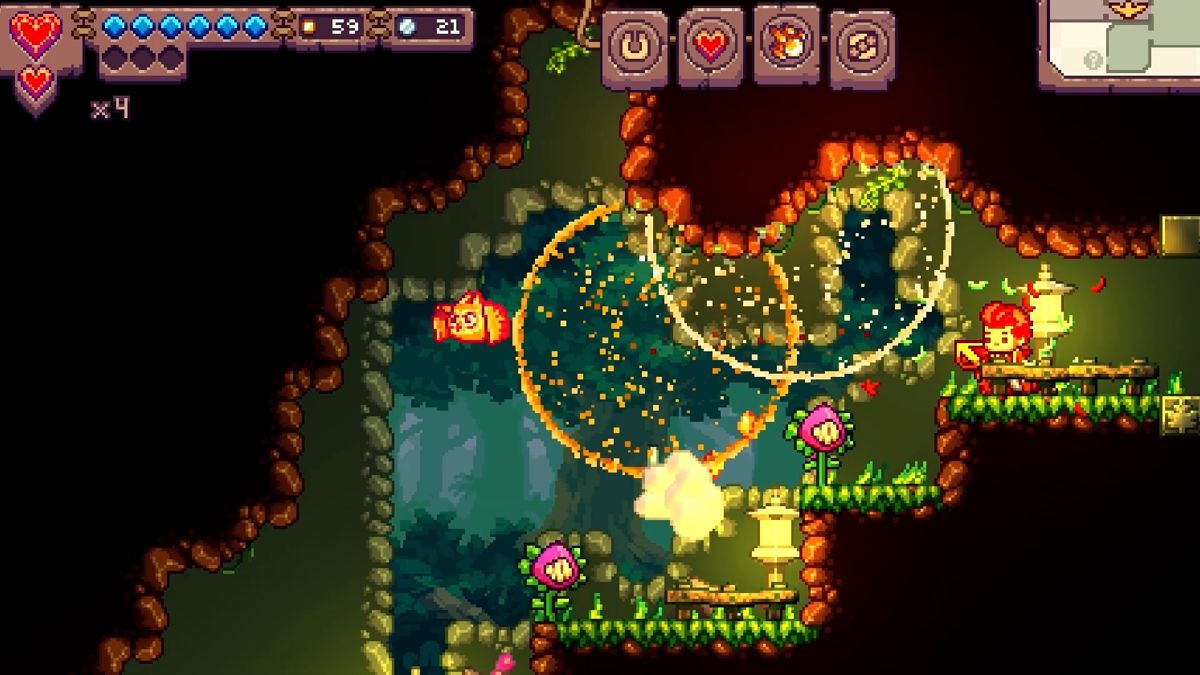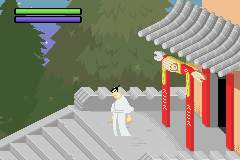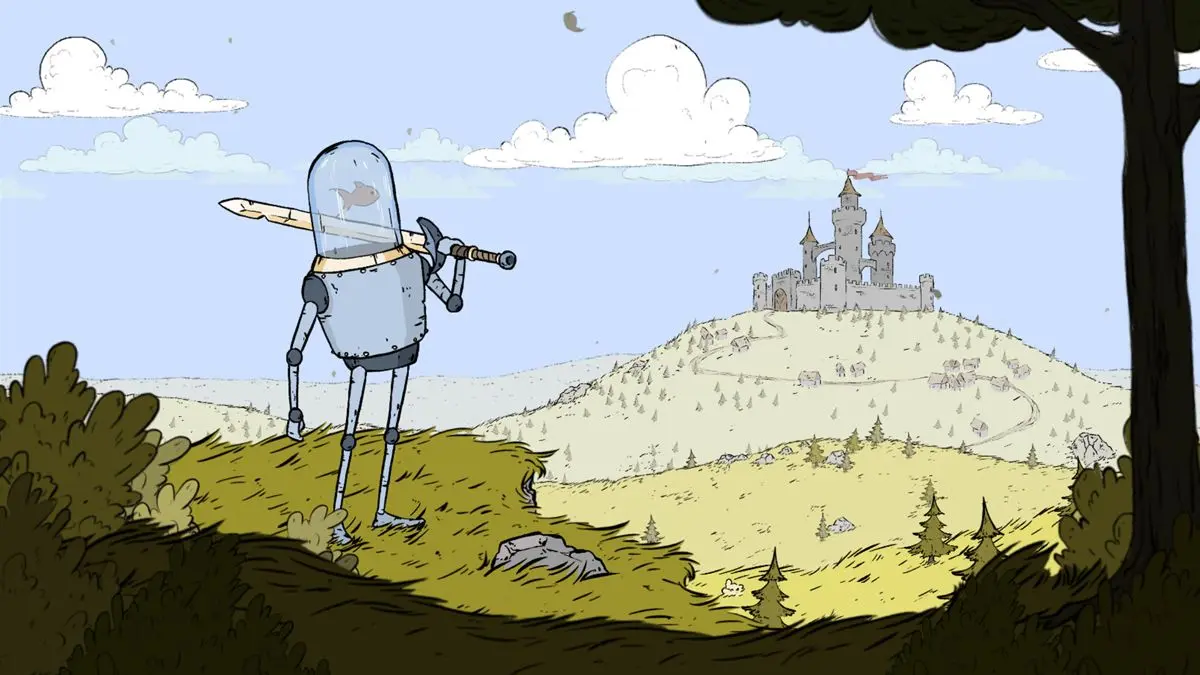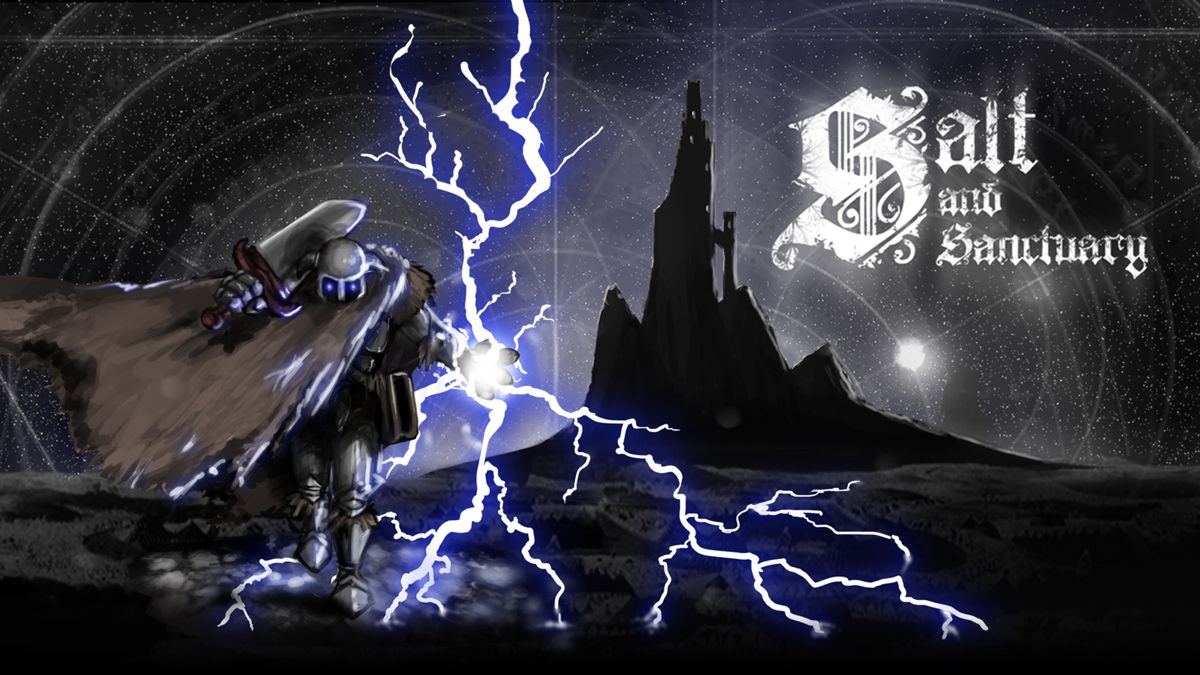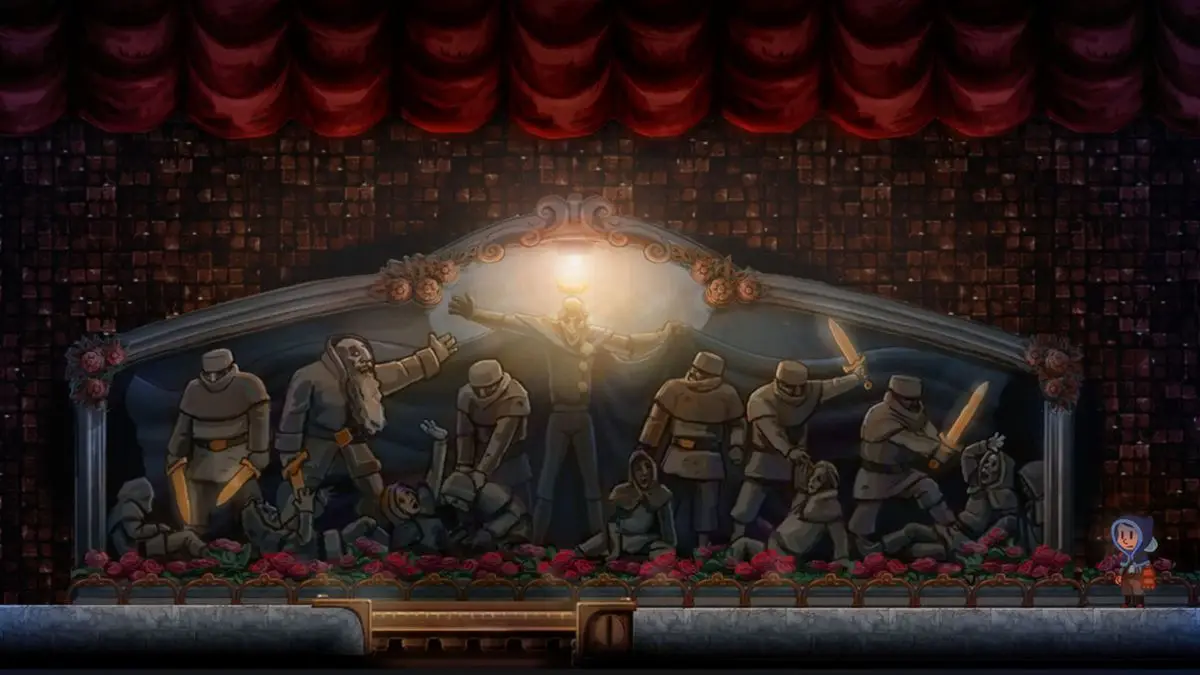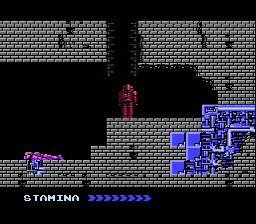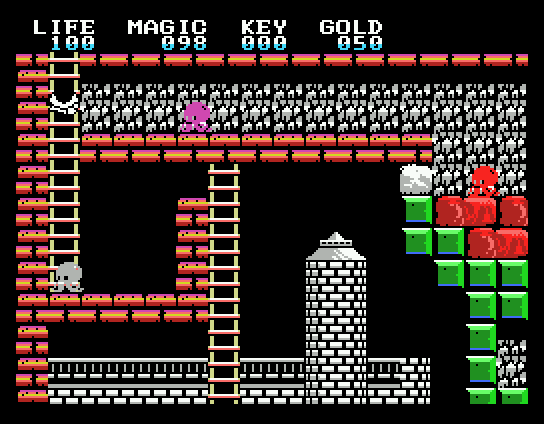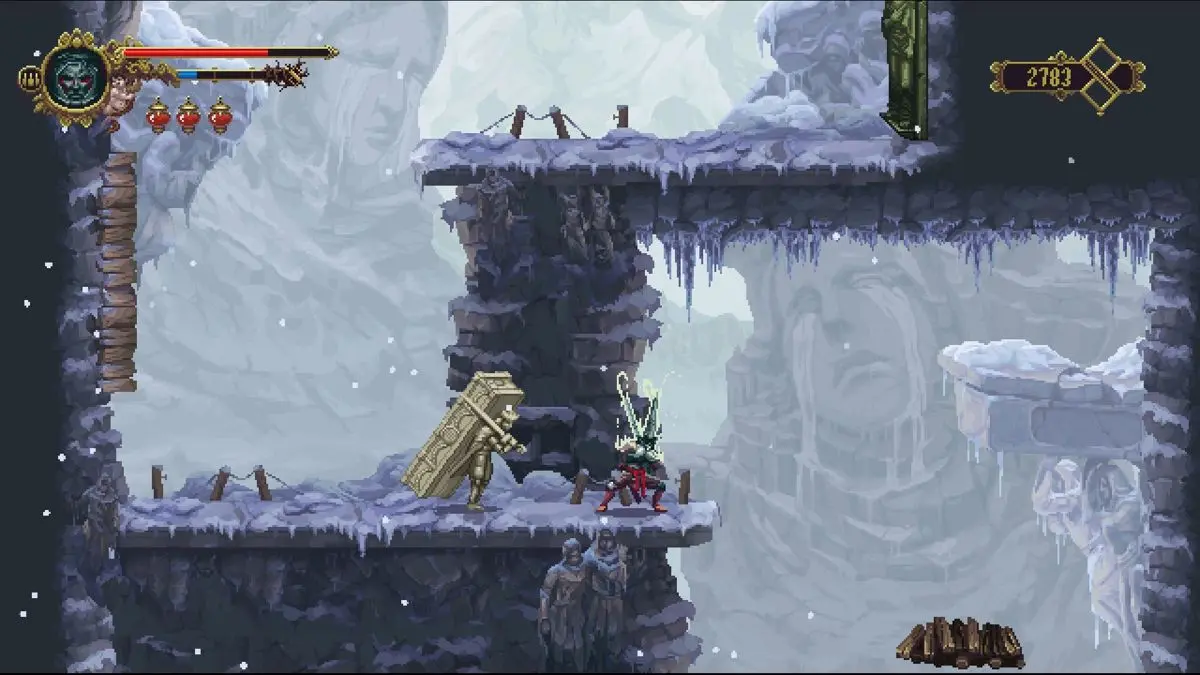Results
Bloodstained: Ritual of the Night
igavania, grindy, hidden areas
Bloodstained: Ritual of the Night is a critically acclaimed Metroidvania-style action-adventure game developed by Koji Igarashi, the godfather of the Igavania subgenre. Drawing inspiration from his work on the iconic Castlevania series, Igarashi has crafted a meticulously designed game that pays homage to the genre's roots while introducing fresh mechanics and elements. The game stands out for its intricate level design, featuring a vast and interconnected castle filled with labyrinthine passages, hidden rooms, and secret shortcuts. Exploration is rewarded with a wealth of power-ups, weapons, and equipment, allowing players to backtrack and access previously inaccessible areas in true Metroidvania fashion. Combat is a central pillar of the experience, with a diverse array of enemies that require strategic positioning and skillful use of various weapons and abilities. Bloodstained boasts a vast arsenal, including swords, spears, whips, and a variety of magical abilities, each with its own unique properties and attack patterns. One of the game's standout features is the Shard system, which allows players to equip and mix-and-match various abilities and passive bonuses, creating unique character builds tailored to their playstyle. This system adds depth and replayability, encouraging experimentation with different shard combinations. Visually, the game showcases a stunning art style, with meticulously crafted backgrounds that capture the gothic horror atmosphere. The attention to detail in the character designs and enemy animations is truly impressive, evoking a sense of nostalgia while maintaining a distinct and modern aesthetic. Overall, Bloodstained: Ritual of the Night is a must-play for fans of the Metroidvania genre, offering a challenging and rewarding experience that pays homage to its roots while introducing fresh ideas and mechanics that solidify its place as a modern classic.
Eagle Island
fantasy, pixel art, challenging
Eagle Island is a roguelite platformer developed by Pixelnicks and released in 2019 (not 2017). Here are some key aspects of the game that might interest someone familiar with the genre: 1. Falconry-based combat: Unlike most platformers, the main character Quill uses his owl companion, Koji, as his primary weapon. Players launch Koji at enemies in various directions. 2. Procedurally generated levels: The game features randomized level layouts, enhancing replayability and challenge. 3. Perk system: Players can unlock and equip various perks that modify gameplay, such as triple jumps or explosive owl attacks. 4. Multiple game modes: Besides the main story mode, there's a Roguelike mode with permadeath and a Speedrun mode for time trials. 5. Elemental system: Koji can be imbued with different elemental powers (fire, ice, lightning) that affect combat and puzzle-solving. 6. Accessibility options: The game offers extensive customization for difficulty and assists, allowing players to tailor the experience to their preferences. 7. Retro-inspired visuals: The pixel art style is reminiscent of 16-bit era games but with modern lighting and particle effects. 8. Boss design: Each major area culminates in a unique boss fight that often requires creative use of Koji and the environment. 9. Exploration rewards: Hidden areas and secrets encourage thorough exploration of each randomized level. 10. Lore integration: The game's story and world-building are woven into the environment and discoverable artifacts, rather than relying heavily on cutscenes. These features set Eagle Island apart from many other entries in the roguelite platformer genre.
Samurai Jack: The Amulet of Time
fantasy, pixel art, post-apocalyptic
Samurai Jack: The Amulet of Time for the Game Boy Advance was a side-scrolling action-adventure platformer based on the acclaimed Cartoon Network animated series. While adhering to the show's distinct visual style and overall aesthetic, the game offered a unique storyline that served as an extension of the series' narrative. One of the standout features was the game's implementation of time travel mechanics. Players could manipulate the flow of time, allowing Jack to traverse between different eras, each with its own distinct environmental hazards and enemy types. This added a layer of complexity to the gameplay, as players had to adapt their strategies and combat techniques to suit the specific time period. The combat system was relatively straightforward but offered a satisfying level of depth. Jack could perform various combos and special attacks, drawing inspiration from his signature sword-fighting style in the show. Additionally, the game incorporated light puzzle-solving elements, often requiring players to manipulate objects or interact with the environment in specific ways to progress. While the game followed a linear progression, it featured multiple paths and secrets that encouraged exploration. Uncovering these hidden areas and collectibles not only rewarded players with power-ups and upgrades but also provided additional insights into the game's lore and backstory. Notably, the game's soundtrack was a highlight, capturing the essence of the show's iconic music and adding to the overall immersive experience. The sound design and voice acting were also commendable, with the original voice cast reprising their roles, further enhancing the game's authenticity. Overall, Samurai Jack: The Amulet of Time was a faithful adaptation that successfully translated the beloved animated series into an engaging and challenging handheld gaming experience, catering to both fans of the show and action-platformer enthusiasts alike.
Feudal Alloy
low fantasy, grindy, pixel art
No synopsis available.
Salt and Sanctuary
platformer, low fantasy, high fantasy
Salt and Sanctuary is a challenging 2D action-platformer with a deep, interconnected world and Souls-like combat. Players must navigate a mysterious, hand-drawn world, overcome treacherous foes, and uncover the secrets of a forgotten land.
Iconoclasts
environmental puzzles, pixel art, challenging
Iconoclasts is a metroidvania-style action-platformer developed by Joakim Sandberg, a single developer who worked on the game for over seven years. While it follows many of the genre conventions, such as nonlinear level design and ability-gated progression, Iconoclasts stands out for its compelling narrative and world-building. The game takes place in a dystopian steampunk world where religious zealots rule with an iron fist, oppressing anyone who dares to question their dogma or tinker with technology. You play as Robin, a skilled mechanic who becomes embroiled in a rebellion against the tyrannical regime. The story tackles mature themes of religion, morality, and the consequences of blind obedience, exploring them with nuance and depth rarely seen in the genre. Iconoclasts' pixel art aesthetic is stunning, with intricate details and animations that bring the world to life. The character designs are particularly noteworthy, with each NPC displaying distinct personalities through their appearances and mannerisms. The game's soundtrack, composed by Joakim Sandberg himself, is equally impressive, featuring a diverse array of tracks that complement the various environments and moods. Combat in Iconoclasts is a highlight, with Robin's wrench serving as a versatile weapon that can be charged and fired in various directions. Additionally, she can upgrade her arsenal with unique weapons and tools, encouraging experimentation and strategy. Boss battles are epic affairs, often requiring players to carefully study attack patterns and exploit environmental hazards. While Iconoclasts excels in many areas, it does have a few notable drawbacks. The game's difficulty can be unforgiving at times, with some bosses and platforming sections feeling overly punishing. Additionally, the backtracking required to progress can become tedious, especially in later stages. Overall, Iconoclasts is a remarkable achievement, showcasing the talent and dedication of its solo developer. Its thought-provoking narrative, stunning visuals, and tight gameplay make it a standout entry in the metroidvania genre, and a must-play for fans of the style.
Teslagrad
environmental puzzles, pixel art, hidden areas
Teslagrad is a visually striking 2D puzzle-platformer that draws inspiration from steampunk aesthetics and electromagnetic principles. Developed by Rain Games, the title stands out for its unique gameplay mechanic revolving around the manipulation of magnetic fields. The game's world is a beautifully hand-drawn, industrial-themed environment filled with intricate machinery and enigmatic devices. Players take on the role of a young protagonist who possesses the ability to control and redirect electromagnetic forces using a specialized glove. Puzzle-solving is at the core of Teslagrad's gameplay, and it's here that the game shines. Players must strategically utilize the magnetic glove to interact with various metallic objects and contraptions, creating pathways, activating mechanisms, and overcoming obstacles. The puzzles are cleverly designed, often requiring players to think outside the box and experiment with the magnetic forces in creative ways. One of Teslagrad's standout features is its emphasis on non-linear exploration. The game world is interconnected, with multiple paths and hidden areas to discover. Players are encouraged to backtrack and revisit previously inaccessible areas as they acquire new abilities or tools, uncovering secrets and optional challenges along the way. The game's artistic direction is truly remarkable, with a striking hand-drawn aesthetic that blends steampunk and Eastern European influences. The detailed environments and character designs are complemented by an atmospheric soundtrack that adds to the game's immersive atmosphere. While Teslagrad is a relatively short experience, it offers a memorable and thought-provoking journey. The narrative is conveyed primarily through environmental storytelling and visual cues, leaving much of the interpretation up to the player's imagination. Overall, Teslagrad is a unique and visually captivating puzzle-platformer that stands out for its innovative magnetic gameplay mechanic, intricate puzzles, and stunning hand-drawn art style. It's a game that rewards patience, observation, and creative problem-solving, making it a must-play for fans of the genre.
Relics: Ankoku Yosai
dark, melancholy, horror
Relics: Ankoku Yosai, released in 1987 for the MSX2 and later ported to other platforms, is a unique and ambitious action-adventure game that stands out in the crowded genre of its time. Developed by Nihon Falcom, the game is set in a post-apocalyptic world where humanity has been nearly wiped out by a cataclysmic event, and the player takes on the role of a lone survivor tasked with unraveling the mysteries of the past and finding a way to restore the world. One of the game's standout features is its non-linear exploration and level design. Players are free to navigate the vast, interconnected world at their own pace, with multiple paths and secrets to uncover. The game encourages backtracking and revisiting previously explored areas as new abilities and items are obtained, adding depth and replayability to the experience. The combat system in Relics: Ankoku Yosai is also noteworthy. While it features traditional action-adventure combat mechanics, it also incorporates RPG elements such as character progression, equipment management, and a unique skill system. Players can learn and upgrade various abilities, allowing for strategic customization of their character's playstyle. The game's narrative is delivered through a combination of in-game events, environmental storytelling, and optional side quests and interactions. The world is rich with lore and mystery, and players are encouraged to piece together the narrative through exploration and discovery. Additionally, Relics: Ankoku Yosai features an impressive soundtrack that complements the game's atmospheric and often haunting environments. The music shifts seamlessly between different tracks, creating a dynamic and immersive audio experience. Despite its age, Relics: Ankoku Yosai is often praised for its ambitious design, compelling storytelling, and innovative gameplay mechanics that set it apart from its contemporaries. It is considered a cult classic among fans of the action-adventure genre and a notable entry in Nihon Falcom's catalog of games.
Legacy of the Wizard
fantasy, environmental puzzles, hidden areas
Legacy of the Wizard, released in 1987 for the Nintendo Entertainment System, is a unique blend of action and puzzle-solving elements, set in a fantasy world. Developed by Sculptured Software and published by Broderbund, the game stood out with its innovative gameplay mechanics and challenging level design. One of the game's standout features was its emphasis on exploration and environmental manipulation. Players assumed the role of a wizard, tasked with navigating intricate dungeons and solving puzzles to progress. Unlike many contemporaneous action games, Legacy of the Wizard required a thoughtful approach, as simply hacking and slashing wouldn't suffice. The game's puzzles were cleverly integrated into the environment, often requiring players to manipulate objects, trigger switches, or use specific spells to overcome obstacles. This added an extra layer of depth and complexity, as players had to carefully observe their surroundings and think critically to proceed. Another noteworthy aspect of Legacy of the Wizard was its innovative spell system. Players could learn and cast various spells, each with unique abilities and applications. These spells not only served as weapons against enemies but also as tools for solving puzzles, adding a strategic element to the gameplay. The game's level design was meticulously crafted, with each dungeon presenting a fresh challenge and requiring players to adapt their strategies. Secret passages, hidden rooms, and unexpected traps kept players on their toes, encouraging exploration and rewarding observant players. Legacy of the Wizard's graphics were impressive for their time, with detailed environments and character sprites that brought the fantasy world to life. The game's soundtrack, composed by David Warhol, was equally noteworthy, creating an immersive and atmospheric experience. While not a commercial success upon its initial release, Legacy of the Wizard gained a cult following among NES enthusiasts and gamers who appreciated its unique gameplay mechanics and challenging puzzles. It remains a beloved classic and a testament to the creativity and innovation that defined the golden era of NES gaming.
Blasphemous
platformer, low fantasy, grindy
Blasphemous is a challenging and atmospheric 2D action-platformer set in the dark, gothic world of Orthodoxia. Players take on the role of the Penitent One, a mysterious and tormented figure, on a quest to uncover the secrets of the Miracle and put an end to the endless cycle of death and rebirth.
Filters
Search Term
Properties
Platforms
Tags (include)
Tags (exclude)
Get Your Game Noticed
Advertise your game with MetroidvaniaDB and reach a community of people who know exactly what they're looking for:
Your game.
Native & Banner Ad Spots
Multi-week Discounts
Game Launch Packages
Discounts for Indie Developers

